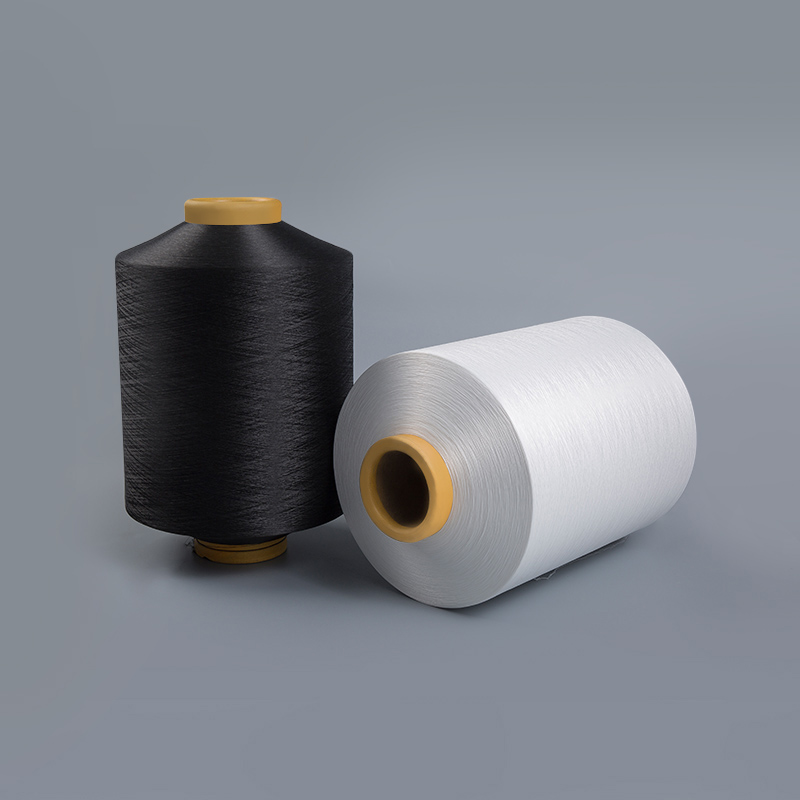Email us now!
Increased Airflow: The unique construction of air-covered yarn involves a core filament that is encased in a layer of air, forming a tubular structure. This design not only contributes to the yarn's lightweight nature but also enhances its breathability. The presence of air pockets within the yarn allows for better circulation of air through the fabric, creating a dynamic system of ventilation. In practical terms, when a garment made from air-covered yarn is worn, the movement of the body creates fluctuations in pressure that facilitate airflow. This airflow helps to disperse heat and moisture from the skin, preventing the feeling of stickiness often associated with traditional fabrics. For example, in athletic contexts, this airflow is critical; as an athlete exerts themselves, their body temperature rises. Air-covered yarn helps to mitigate this by allowing heat to escape, thus maintaining a cooler and more comfortable wearing experience, which is essential for prolonged physical activities.
Moisture Management: Air-covered yarn excels in moisture management, primarily due to its hydrophilic properties. The core fibers used in air-covered yarn are often selected for their ability to absorb moisture. This absorption is critical for the wicking process, where moisture is drawn away from the skin and transported to the outer surface of the fabric. Upon reaching the surface, the moisture spreads out and evaporates more quickly, facilitated by the airflow created by the yarn’s structure. This evaporation process not only keeps the wearer dry but also significantly reduces the risk of overheating. In activewear, where sweat accumulation can lead to discomfort, odor, and even skin irritations, the ability of air-covered yarn to manage moisture effectively becomes a crucial factor in garment performance. The rapid evaporation of sweat contributes to a feeling of freshness, which can enhance an individual’s focus and performance during activities such as running, cycling, or intense gym workouts.
Temperature Regulation: Temperature regulation is a vital component of performance-oriented textiles, and air-covered yarn contributes significantly to this aspect. The synergy between breathability and moisture-wicking capabilities allows air-covered yarn to create an effective microclimate around the wearer’s body. When the body heats up during physical activity, the evaporation of sweat facilitated by the air-covered yarn helps cool the skin. This cooling effect is essential for preventing heat-related issues such as heat exhaustion or heat stroke, particularly in high-temperature environments. The ability of air-covered yarn to maintain a consistent body temperature allows athletes to perform at their peak without the discomfort caused by overheating or excessive sweating.
Comfort and Fit: The comfort of a garment is often determined by its fit and the materials used. Air-covered yarn is inherently elastic, allowing it to stretch and move fluidly with the body’s movements. This elasticity contributes to the overall comfort of the garment, as it reduces the likelihood of restrictive feelings that can occur with stiffer fabrics. The lightweight nature of air-covered yarn minimizes the burden of heavy clothing, making it an excellent choice for active and performance wear. The comfort provided by air-covered yarn extends beyond physical activity; garments made from this material are also suitable for everyday wear. The breathability and moisture-wicking properties ensure that individuals remain comfortable throughout the day, whether engaged in physical activities or casual outings. The fabric's softness and smooth texture enhance tactile comfort, making it pleasant against the skin. This is particularly important for garments intended for prolonged wear, where irritation or chafing can detract from the overall experience.
Colored Polyester Rubber Elastic Yarn For Textile Use














